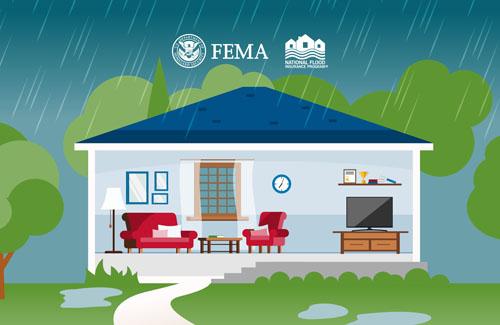When people experience flooding, it can be jarring, and it's unlikely to ever be forgotten. The sights of their homes being battered by rain or the smell of their belongings soaking become lasting memories that unite your clients with one thought: “never again.”
Rebuilding after a storm is hard, but flood insurance makes it easier. Flood insurance helps your clients to build back stronger than before.
How to reduce flood damage
Rightfully, people who have experienced flooding firsthand overwhelmingly make the decision to buy flood insurance. It's a moment your clients feel empowered to control their own lives and feel comfort in their own home again. Flood insurance gives them peace of mind that they'll weather the weather. With an NFIP flood insurance policy, your clients have options for rebuilding safer and stronger after a flood, including methods like:
- Exploring mitigation options such as elevating their home
- Wet floodproofing or dry floodproofing their home
- Relocating their building
These measures can be costly, but your clients can find support if they're eligible for Increased Cost of Compliance (ICC) coverage. Download and share the Rebuilding Safer And Stronger After A Flood brochure to help your clients understand their mitigation options.
Standard insurance policies don’t cover flood damage
Storms are inevitable. There is an ever-growing number of immediate and future risks associated with changing weather patterns. While nobody can predict when or where a flood will hit, everyone has an equal chance of protecting the lives they've built from flooding by insuring their homes.
Your clients may not realize that it's highly likely their homeowners or renters insurance has gaps that don't include coverage for damage caused by flooding. Help your clients fill those gaps and get the protection they deserve. Use the NFIP's Summary of Coverage Brochure to ensure your clients have all they need to protect their lives from flooding.
For more free resources, tools, talking points and marketing materials, visit the NFIP's Resource Library.

